Violinist Max Hobart has enjoyed a long career in music


Theater and wrestling impresario turned novelist
Sheldon Goldberg



Theater and wrestling impresario turned novelist
Sheldon Goldberg

Caregiving
when you need it.
At AARP Family Caregiving, we’re here to help you get answers, connect with other family caregivers and find local resources close to home. So you can take care of what matters most.
To learn more, visit aarp.org/caregiving.
By Jennifer Benson AArP MAssAchusetts stAte Director
If you’re looking to make a change in your community, AARP Massachusetts is here to help. We’re committed to making Massachusetts even more livable for people of all ages. Every year AARP holds our Community Challenge Grant Program. Since 2017, AARP has been inviting local eligible non-profit organizations and governments across the country to apply for the AARP Community Challenge grant program.

Jennifer Benson
AARP Community Challenge grants fund quick-action projects that help communities become more livable by improving public places, transportation, housing, digital connections, and more. Now in its ninth year, the program is part of AARP’s nationwide Livable Communities initiative, which supports the efforts of cities, towns, neighborhoods and rural areas to become great places to live for all residents, especially those age 50 and older.
The Community Challenge is a critical part of how AARP Massachusetts collaborates with local residents, advocates, and policymakers to make our communities better places to live for people of all ages, especially Bay State residents 50 and over.
This year, the AARP Community Challenge is accepting applications across three different grant opportunities. All projects must be consistent with AARP’s mission to serve the needs of people 50 and older along with other eligibility criteria.
/AARPMA @AARPMA

Capacity-building microgrants are paired with additional resources, such as one-on-one coaching from national nonprofit organizations, webinars, cohort learning opportunities and more for improving walkability, bikeability; implementing safe, accessible home modifications; and disaster preparedness training. Demonstration grants fund projects that encourage replication of exemplary local efforts. This year’s focus is on improving pedestrian safety with funding support from Toyota Motor North America; expanding high-speed internet access and adoption with funding support from Microsoft; reconnecting communities divided by infrastructure; and implementing housing choice design competitions. Flagship grants support projects that improve public places; transportation; housing; digital connections; and community resilience.
AARP is committed to creating communities where people of all ages and abilities can thrive. The Community Challenge helps cities, towns and counties get things started with small improvements that can kick-start meaningful changes that improve people’s lives and strengthens the places they call home.
Since 2017, AARP has invested $20.1 million toward 1,700 projects — including 44 in Massachusetts — nonprofit organizations, and government entities across all 50 states, the District of Columbia, Puerto Rico and the U.S. Virgin Islands through the Community Challenge. The program aims to provide support to all community types, including rural, suburban and urban communities with a special focus on the needs of those 50 and older.
Among the projects funded in 2024:
• In Watertown, an eviction prevention program to help older residents.
• In Pepperell, we helped fund an ADA door system to a building which operates a food pantry.
• In Wayland, we helped fund home safety trainings for older adults in an effort to help residents aging in place.
• In Worcester, we funded programs that offered digital literacy courses to older residents.
The Community Challenge is open to eligible nonprofit organizations and government entities. Other types of organizations are considered on a case-bycase basis. Grants can range from several hundred dollars for small, short-term activities to tens of thousands for larger projects.
The application deadline is 5:00 p.m. March 5, 2025. All projects must be completed by December 15, 2025. To submit an application and view past grantees, visit www.AARP.org/CommunityChallenge.
Jennifer Benson is the State Director for AARP Massachusetts. For more articles visit www.fiftyplusadvocate.com.
By MAtt roBinson contriButing Writer
BOSTON – Shakespeare has often been quoted as opining that, “All the world’s a stage,” and that, during his lifetime, a man “plays many parts.”
For Sheldon Goldberg, this is figuratively as well as literally true given the various stages of his career.
Growing up in Boston’s Mattapan neighborhood as part of a dwindling Jewish community, Goldberg says that he was not wealthy but that, “whatever I didn’t have in possessions, I made up for in imagination.”
Creative pursuits
Drawn to creative pursuits, Goldberg found himself working in the world of broadcasting while still in high school.
“I was recruited to be part of an Explorer program (part of the Boy Scouts) at WNAC, WRKO and WROR,” he recalled. “This really opened up my world and changed my life.”
Getting his first real job as a tour
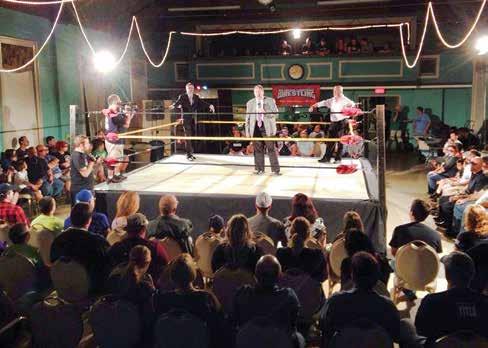
guide at the stations, Goldberg hoped to parlay his time there into a career after graduation. But when he realized how competitive it was in Boston


(which is one of the 10 largest media markets in the country), he decided to refocus his creative talents elsewhere.

“My senior year in high school, I interned for a semester at Warner-Elektra-Atlantic Records, which had a local branch in Medford at that time,” he said. “I worked in the mail room and crossed paths with artists, managers and other record industry people. I was very much collecting experiences!”
Even though these experiences did not lead to a job in broadcasting, the friends he had made in media quickly came back into play when Goldberg was asked to handle publicity for a local theatrical company. Combining his contact list with information he garnered from books about public relations, Goldberg soon began to make his mark on the Boston scene in a new way and people began to take notice.
“Soon other local companies gave me jobs,” he explained, remembering how quickly he moved from answering phones at the Wilbur Theater to the Colonial Theater, where he began handling PR for travelling companies and visiting stars, includ-










Ring leader | from page 3
ing the legendary Lauren Bacall who was trying out “Woman of the Year” in Boston.
Soon after Bacall bounced to Broadway, Goldberg caught a musical revue at the Boston Repertory Theater.
“It was called ‘The All Night Strut.’” Goldberg recalled. “It was a musical revue of songs from the 30s and 40s. It was a big hit, but when I went with a date to see it, I said to her, ‘This is all my parents’ music. I could put something together that’s better than this!’”
Move into theater production
Though some colleagues scoffed, Goldberg ended up putting together a Motown revue called “Dancin’ In The Street.”
“At the age of 24,” Goldberg observed, “I was a theater producer and I had a hit!”
Not only was “Dancin’” a long-running show (the longest running locally produced musical in Boston theater history), but it was also the first of what has become one of

the most popular types of musicals on Broadway today. The so-called “jukebox” musical is a production made up

better than that?”
Despite his great success in both worlds, Goldberg admits that his personal ties to theater and wrestling are thin at best.
“The only acting I did was the high school play,” he said, “and I only wrestled with my conscience.”
Even though he had never trod the boards or slipped on tights and a mask, Goldberg had grown up as a fan of professional wrestling and had even created a wrestling-themed publication.
“I created a newsletter for collectors of pro wrestling memorabilia called Mat Marketplace,” said the long-time collector. “It became a mildly successful enterprise that brought me a lot of credibility within those circles.”
As he had done in the theater world, Goldberg aligned with a local promoter, the late “Boston Bad Boy” Tony Rumble and began working on his shows by putting his mark on every part of the business he could.
of popular songs from one artist or era.
“I claim that as my invention,” Goldberg said humbly.
In addition to becoming an expert at assembling musical numbers that would make for great shows, Goldberg also found a knack for dealing with difficult performers.
“The very first producer I ever worked for said that actors fall into two categories,” Goldberg suggested, “crazy and hospital crazy. By necessity, I got good at dealing with the ‘hospital crazy’ ones!”
As he was so adept at dealing with challenging personalities, a move to the world of professional wrestling seemed almost lateral.
“They are both live events,” Goldberg reasoned when asked how the two worlds coalesce, “and they are both businesses where the key people have egos.”
Though Goldberg goes so far as to call wrestling “people’s theater,” the fact that you did not need a theater to host it was a great advantage, as it allowed him to present performances in smaller venues that could attract (and be afforded by) people who might not otherwise be interested.
“Theater owners exert a tremendous control over the productions that occupy their spaces,” he noted. “Pro wrestling can go anywhere there is a big enough space for it.”
As he could offer more shows to more people, Goldberg was able to engage more fans and, as he puts it, “Make a lot of people happy. What’s
“I did everything from managing the company’s website, to doing tickets, posters and flyers and appearing in ring as the...‘commissioner,’” he said.
Launching his own company
When Tony Rumble died suddenly in 1999 of a massive heart attack, Goldberg went out on his own and Boston-based New England Championship Wrestling (NECW) was born.
Soon after launching the company, Goldberg began calling on his old skills to innovate in his new field.
“We were the first promotion to do a regular weekly show produced to specifically stream online on our website,” he recalled, noting that the show launched in 2004, which was even before YouTube.
In NECW, future superstars found a place to ply their trade before they became famous, such as Kofi Kingston, Finn Balor, Beth Phoenix, Becky Lynch, Sasha Banks, and John Cena (who would go on to become champion of the world’s largest wrestling business — World Wrestling Entertainment). Live matches sold out various venues in the greater Boston area.
Goldberg not only hosted and produced the online video program but was tapped to host and produce a wrestling-themed radio show on the former station WWZN 1510 The Zone. The show was eventually syndicated to other markets. In this way, he was able to call on his own past to build the future of what is now a very popular form of entertainment.

Health issues led to becoming a novelist
“I worked like a madman,” Goldberg said. “I was promoting live events, producing a weekly TV show and a radio show, as well as doing all the PR and marketing on top of a regular job.” An injury seven years ago forced him to begin to slow down.
“I shattered my right shoulder in a fall and that forced me for the first time in over 15 years to take a significant break,” he explained. “I started up again on a lesser schedule and then the pandemic brought everything to a halt. I produced some video projects while plotting a more significant return and then two years ago, I suffered kidney failure and went on dialysis.” Just like a great wrestler, Goldberg refused to go down for the count and instead pivoted again — this time to writing.
“I told myself that this couldn’t be the end of my creative life,” he recalled. “I didn’t know how things would progress, but I promised myself I would figure out what I could do and do that.”
The result of this latest turn in his own storied career is a two-part novelization of life in professional wrestling.
“Most people who write wrestling books write biographies or histories,” Goldberg observed. “Being the contrarian that I am, I wanted to write a fictional story that really did the business of pro wrestling justice.”
In “The Last Fall,” Goldberg tells the story of Rick Pacheco, a wrestler who stumbles into the business and finds a way to navigate the ups and downs of wrestling life. The first book proved so popular that Goldberg wrote a sequel called “After the Bell,” in which Pacheco now owns his own
Sheldon Goldberg’s latest novel is “After the Bell,” which tells the story of fictional retired wrestler Rick Pacheco, who now owns his own wrestling company and is helping train the next generation of stars.



Experience a sense of neighborhood & community, set amid lush, green surroundings. ∙Award-winning 62+
wrestling company and is helping train the next generation of stars.
“What sets my books apart,” Goldberg suggested, “is that even though they are fictional stories, they present a very accurate depiction of the pro wrestling business. There’s a lot of truth within the fiction.”
Goldberg is keen to assert that, even though professional wrestling is admittedly theatrical, there is still a strong element of sport to it.
“Pro wrestling is a unique business,” he maintained. “It’s a hybrid of sports and entertainment, but make no mistake about it — it is a sport. It requires a high degree of athletic ability and it’s a highly-skilled profession. There are a bazillion stories that are in and around it, which makes it interesting and fun to write about!”
As he has lived in the wrestling world for so long, Goldberg is able to share what he has seen and learned even with people who may never have entered an arena.
“Non-wrestling fans really dig it,” he said with a smile. “It’s easy for them to understand what the business is, why it is and what made it change over the years which is the backdrop to the main character’s story. It’s more than just a wrestling story. There’s a coming-of-age story. There’s a murder. There’s a redemption story and even a love story. Nonfans can really connect to the emotion in it.”
As he had often felt as if his own life were on the ropes, Goldberg is thrilled and grateful to have found success once again in a new creative endeavor and, despite some health issues, is still looking forward to his next act.
“The book really saved my life,” he said.
200 West Foster St., Melrose 781.665.6334 | LiveCRH.com
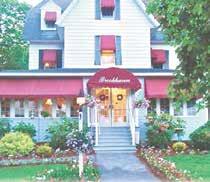
Medical coordination and support services for:
- Dementia - Parkinson’sElderly folks with medical needs who can no longer live alone
19 West Main Street, West Brookfield (508)867-3325
years experience providing 24 hour care. Always - TLC with compassion and quality care.

For those recovering from a stroke, injury or illness, regaining your best quality of life begins with your ability to choose. Choose us for exceptional results. Regaining your quality of life

By shAron oliver contriButing Writer
CAMBRIDGE - Fans of the 1960s ghoulish sitcom “The Munsters” will likely remember Herman Munster, played by Fred Gwynne, the patriarch of a family of benign characters that appeared to be lifted straight out of classic horror movies. Surrounded by spider webs, bare trees and dead leaves on unkept grounds, the Munster mansion’s fictional address is famously known as 1313 Mockingbird Lane in Mockingbird Heights. However, it has never been clear as to which state the Transylvanian-American family resided in. On the other hand, it is quite clear as to which state Gwynne got his career start in — Massachusetts.
Harvard days
During the 1940s, the native New Yorker worked as a summertime swimming instructor at the exclusive Duxbury Yacht Club pool in Duxbury while he studied at Harvard on the G.I. Bill after serving as a radioman aboard the USS Manville in the Pacific during World War II. While at Cambridge, Gwynne drew cartoons for The Harvard Lampoon and sang bass in the

tuxedo-clad a cappella group the Harvard Krokodiloes. He is also among a long list of those who acted for the Hasty Pudding Theatricals, a list which includes Andover native and CNN anchor John Berman and Academy Award winner Newton native Jack Lemmon. Upon graduation in 1951, Gwynne
Actor Fred Gwynne, front row, center, the lovable father on the 1960s TV series “The Munsters,” got his start in acting while a student at Harvard University in Cambridge. (Photo/Wikimedia Commons)
“Freddy,” drawing and painting were the actor’s first loves. Biddle recalls one life-changing vacation the two took together. Biddle stated for a Crimson interview, “Freddy was a wonderful cartoonist. He inspired me to begin writing a comic strip for my local newspaper. I was at Cape May with Freddy a few years ago, and we agreed to draw caricatures of each other. I drew him as a man in his 60s, but he drew me as I looked when we were kids. When we came to Harvard, it was bereft of the arts. We started arts at Harvard.” Biddle and fellow co-founder of the Krokodiloes, David G. Binger, credit Gwynne with helping popularize the theater scene at Harvard and fill seats in the Brattle Theater.
joined the Brattle Theatre Repertory Company. The small movie house is one of the few remaining theaters that uses a rear-projection system. The projector is located behind the screen instead of behind an audience.
According to lifelong friend David S. Biddle, who attended Harvard with

Within the building amenities include:
• A Theater-like media center
• Handicap-accessible lounges on every floor
• Library equipped with two computers and free internet access
• Physical fitness center
• Game room with billiard table
• Community room with bingo board and large screen TV
27 Mount Vernon Street, Worcester, MA • O ffice O pen D aily 8:00 am - 4:30 pm
To receive an application please call 508-755-6062 TDD# 508-755-0228
Now accepting applications for 62 years of age and older and those who are under 62 years of age and are permanently disabled.
Applicants must meet HUD annual low income guidelines. Preference is given to individuals 62 and older.
Gwynne’s daughter, Madyne Gwynne, agreed that her father was “foremost an artist, not an actor” and spoke about some of her his fondest memories, stating, “I went to a Krokodiloes reunion with him once. He loved singing, and he loved his college years, especially the Lampoon.”
Artistic talent
Biddle added that his friend really came to Harvard for the Kroks and had
• Contemporary styled 1 & 2 bedroom apartments
• New kitchens with built-in microwaves and granite-like countertops
• Small pets welcome
• Heat and Hot water included
• Bus route / ample parking
• Beautiful landscaped grounds with gazebo


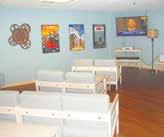

By shAron oliver contriButing Writer
BOSTON – Although it may sound cliché to say, “music has charms to soothe the savage beast,” there is some truthfulness to the phrase. If there is one commonality most people share it is a love for music. It is truly universal and in April 1968, singer James Brown’s historic concert at the Boston Garden drove the point home when it mattered and was needed the most.
Almost immediately following the assassination of civil rights leader Dr. Martin Luther King, Jr., the nation was faced with civil unrest. President Lyndon B. Johnson had declared a state-of-emergency. Riots and looting were widespread. The Roxbury and South End sections of Boston had suffered uprisings and fires and tensions were high. Brown’s appearance at the Garden had been scheduled for months but this meant Mayor Kevin White had another dilemma. Should he cancel the event to appease those worried about ensuing violence or move forward to please those less fearful?
A young African-American city councilman named Tom Atkins proposed carrying a free, live broadcast of the concert in hopes of keeping as many residents as possible at home watching television rather than being out on the streets. According to James Sullivan, author of “The Hardest Working Man: How James Brown

Saved the Soul of America,” Atkins had a blunt message for Mayor White. “You can’t cancel the James Brown show because if you do that, you’re going to have 14,000 kids showing up at the Boston Garden finding out by a piece of paper stuck on the door that the show has been canceled,” said Atkins. “And, if they’re not already angry and distraught over the murder of Dr. King, now they’re really going to be mad.”
Televising the concert
Atkins and White convinced WGBH on short notice to air the show but persuading the Godfather of Soul took some doing. Brown stood to lose approximately $60,000 if his concert was shown on television due to a non-compete agreement related to an upcoming televised concert. Mayor White made the decision to meet Brown’s financial needs and Boston did indeed see less crime on that night.
The concert was the subject of a 2008 PBS documentary titled, “The Night James Brown Saved Boston.” The performance was described as gripping, the speeches inspiring and the charismatic showman was widely credited with helping to maintain a degree of peace and calm in the city. Jimleboeuf7685 wrote on Facebook:
“I’m 67, white, and barely remember all this. Right now, I’m livid and I’m crying. All the assassinations of so many great leaders, AIDS and crack pushed through every city in America, a welfare system purposely designed to separate fathers from their families, and on and on and on. I always knew James Brown was a great entertainer, songwriter, and musician. Now I know he was a great man also.”
Trose202 added: “I’m from Boston and I really did enjoy watching this concert so thank you for uploading this video.”
At one point during the concert, a few male fans climbed the stage, and policemen began forcefully pushing them back. Brown urged the cops to back away before things got volatile and then addressed the crowd, “Wait a minute, wait a minute now WAIT! Step down, now, be a gentleman. Now I asked the police to step back, because I think I can get some respect from my own people.”
It worked. While many cities across the country continued to experience turbulence and mayhem, Boston remained relatively strife-free on that Friday night.
By colin MccAnDless contriButing Writer
BOSTON – Spit was a 1980s Boston nightclub with an attitude as in-yourface as its name. It opened in 1979 and was located on lower Lansdowne Street across from Fenway Park. It was a punk/ new wave nightclub that featured DJs on most nights but also occasional live bands.
Anti-dress code
The area around the bar was poorly lit, which added to the dark and foreboding atmosphere, and the building was painted black with one small door. A sign at the entrance proclaimed what basically amounted to a ban on disco attire of any kind: “No polyester, no polo shirts, no leisure suits, no gold chains.”

Its informal dress code was decidedly downscale. The punk ethos was on full display as patrons sported black leather, torn shirts and pants, fishnet stockings, chains, dog collars, spiked and studded wristbands, garish makeup and spiky and colored hair. The Boston Herald once described Spit as a “decadent den of iniquity,” and the “epicenter of Boston’s punk/New Wave scene.”
According to Boston Magazine, its peculiar appellation was the brainchild of Patrick Lyons, an entertainment mogul who now oversees the dining and entertainment company Lyons Group, who owned the venue and aimed to “come up with the grossest name he could think of.”
Lyons rapidly turned Spit into a popular nightclub, by hiring DJs who
brought punk rock to the Boston club scene, such as Edward Hyson, known by the moniker Oedipus, who created the first punk radio show in America while a DJ at MIT’s college station WTBS and would later become the program director at WBCN. Lyons is credited with pioneering a party approach at Spit called “double-decking,” where a band played a set, then the club would follow that up with a DJ to keep the good times rolling and the crowd bumping.
An alternative music refuge
❖ Estate Planning
❖ Elder Law
❖ Long Term Care Planning
❖ Masshealth Applications
❖ Corporate & Business Planning
❖ Real Estate
❖ Powers of Attorney
❖ Guardian/Conservator Issues
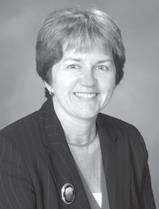
Josephine L. Veglia, Esq.
ATTORNEYS AT LAW
2 Jackson Ct. | Oxford, MA 01540 | 508-987-3981 | Fax 508-987-1317 www.durbinandveglia.com
Spit became known as a haven for people who wanted something different than the prevailing music style of the ‘80s—something edgier—and sought out punk, post-punk, New Wave and hardcore punk. Bands that performed there over the years included everyone from local favorites like Mission of Burma and Human Sexual Response to the Ramones, The Pogues, the Dead Kennedys, and The Smithereens. The Red Hot Chili Peppers played Spit in 1984, taking the stage in their customary lack of dress save for a sock covering up their naughty bits.
There were also times when the club, which had a capacity of 600 people, wouldn’t announce the acts in advance, and people would show up in droves anyway just to see who the mystery band might turn out to be on that particular evening. On nights when there were just DJs, people came to dance their tails off to punk and New Wave tunes. An article in BostonMan Magazine recounted that Spit hosted a House Music Night every Friday. Sunday was gay night, during an era when being openly gay was nowhere near as prevalent as it is today.
On the Music Museum of New England website, one former patron reflecting on the impact Spit had on his life. Jeff Booth characterized the music there as “raw, hard and real,” adding
that “basically, it represented the Wild West of what was possible and none of the music was passive, regardless of the particular genre.”
He recalled how the bartenders would mingle and interact with the crowd, including Dini Lamot of the Boston band Human Sexual Response, who would “spray bad dancers with seltzer on a regular basis.” Booth also recollected that Lamot invented a cocktail called the “Mat,” an amalgamation of all the liquors that had spilled into the bar mats from that night combined into shot glasses. This “mixed” drink came with the hefty price tag of $10, quite an exorbitant amount for the average customer in the 1980s.
Musicians sometimes interacted with staff as well. Frank Zappa once bought a Spit T-shirt and asked a club employee to spit on it, to which she readily obliged, much to his delight.
The end of an era
Spit lasted until 1987, when it became another club called Axis. Despite its relatively brief existence, the venue attracted a loyal following, and there is still an active Facebook page dedicated to Spit and Axis, along with other iconic Boston nightlife spots.
The Old Dirty Boston Facebook page has also given the club a shout out that elicited a bevy of comments as people waxed nostalgic about Spit and shared their memories and anecdotes.
Victoria Palmer recalled a wild night when the actor, comedian and screenwriter Dan Aykroyd bumped into her while she was on the dance floor. “He was high as a kite,” she recollected. “My boyfriend said to him, ‘Welcome to Boston, Mr. Aykroyd,’ and put his hand out to shake. He (Aykroyd) looked at his hand like he was on Mars, then his security team whisked him away.”
Vickie Dyckes, who attended the Art Institute of Boston, said she would go there every Friday night. She remembered Spit as a fun, crazy place where you could let loose. “Because we were regulars, we could always jump to the front of line. Love the music, the New Wave sound, dressing in black, staying ‘til close.”
Another person related that the radio station WBCN would hold afternoon concerts at Spit during a weekday where you got treated to a free beer and a hot dog. Others simply reminisced about what they considered at that time to be their favorite nightlife spot, with Spit buttons, cards and stickers proclaiming their allegiance to a place where they felt right at home on the dance floor.
Booth concluded of Spit that it was more than just a club; “It was an attitude.”
By shAron oliver contriButing Writer
REGION – Cast members of the sketch comedy TV show “Saturday Night Live” (SNL) have been tickling audiences’ funny bones for decades due to their heavy roster of comedians. Some like Eddie Murphy, Dan Aykroyd, Will Ferrell, Adam Sandler, and Tina Fey have gone on to become household names and star in box office hits. Others have sadly fallen into a dark hole of oblivion. Fans may have even forgotten that a few “SNL” alums are not only Massachusetts born and raised but are the face of some of the longest-running sketch show’s most memorable characters.
Original cast member
Cambridge native Jane Curtin is one of the original cast members and was one of the series’ first stars. The Emmy winner performed five years (1975-1980) as a regular and appeared in many fan-favorite sketches. Curtin is perhaps best known for her role as Prymaat, matriarch of the Conehead family and was the first female to anchor the popular Weekend
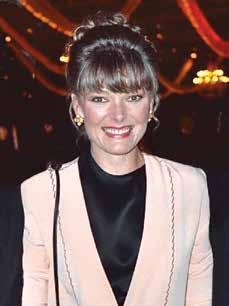
Cambridge native Jane Curtin is one of the original cast members of the sketch comedy TV show “Saturday Night Live.” (Photo/ Wikimedia Commons/Anders Krusberg)
Update segment. She is also known for playing the foil to John Belushi and Gilda Radner.
Nancy Carell hails from Cohasset and was part of the cast from 1995 to 1996. The Boston College alum, who

eight-year
on
married fellow comedic actor Steve Carell in 1995, performed under her maiden name, Walls. While at “SNL,” Carell was known for her impression of CNN anchor Bobbie Battista, who died of cancer in 2020.
Now accepting Applications for 62 years of age and older and those that are under 62 years of age and are permanently disabled.
• Heat and hot water included
• Qualified Applicants pay 30% of adjusted income
• 24 hour emergency maintenance
• Non-Smoking Community
• Monthly activities include: exercise classes, birthday parties, book mobile, blood pressure screens and podiatry
• Manicured walking paths with garden plots
• Ideally located in Natick residential bus route
• Pets okay under 20 lbs.

Lexington hometown girl Rachel Dratch appeared on “SNL” for seven seasons (1999 to 2006). She attended William Diamond Middle School and Lexington High School and has admitted to being the “class clown type.” The bubbly actress/comedian is best remembered for her depressed persona, Debbie Downer, who often managed to bring down the mood of other people. Dratch continues to make appearances highlighting her distinct New England accent in ads like the 2020 Hyundai Superbowl commercials which also featured Chris Evans, John Krasinski and David “Big Papi” Ortiz.
Anthony Michael Hall starred in 1980s cult classics like “The Breakfast Club” and “Sixteen Candles,” but the West Roxbury native was also a primetime player on “SNL” from 1985 to 1986 when he was just 17. Reportedly, Hall found the environment to be far more competitive than he expected. He was not the only actor dismissed after only one season. Joan Cusack, Randy Quaid, Terry Sweeny, Danitra Vance and future Iron Man Robert Downey, Jr. were also shown the exit.
SNL | 11




The classic orange roof with its spire topped with a weathervane was the signature look for Howard Johnson’s restaurants.

Howard Deering Johnson was a World War I veteran who grew up in Quincy, where he launched his namesake business during the 1920s.
(Photo/Wikimedia Commons/John Stephenson)

Colony Retirement Home III is congregate housing for seniors. Enjoy nutritious “Home Cooked Meals,” served in our attractive dining room with your neighbors and friends.

By shAron oliver contriButing Writer
QUINCY – Though the old look may be disappearing from city landscapes across the nation and various countries, Howard Johnson’s landmark orange rooftop was as symbolic as McDonald’s golden arches, a type of North Star for hungry and weary travelers. Founded by Howard Deering Johnson in 1925, the hotel chain began as a restaurant in Quincy, and during the 1950s, the company expanded its operations by opening hotels known as Howard Johnson’s Motor Lodges.
28 flavors of ice cream
A grade school dropout, Johnson was born in 1896 and grew up in Wollaston, Massachusetts, a neighborhood in the city of Quincy that included its eponymous beach. In 1925, Johnson borrowed $2,000 to purchase and operate a small corner pharmacy where he eventually created and sold 28 flavors of ice cream. The “28” (flavors of ice cream) became his trademark. There were also contests held.

All apartments at Colony Retirement Homes receive rental assistance through the HUD section 8 program. Rent is 30% of your adjusted monthly income. Rent includes all utilities except phone and cable TV. Call Monday thru Friday, 9am to 5 pm for more information.
If a person could provide proof via a check-off coupon that they had sampled all 28 flavors, the next ice cream cone was free. Johnson would later add clams and hot dogs to the menu.
Knowing that obtaining a loan from the bank was highly unlikely, Johnson struck a deal with a bank in Quincy and made a proposal that if they accommodated him with a fair price for the ground floor space, he would bring in foot traffic by establishing a restaurant. The plan worked in a big way involving Eugene O’Neill’s play “Strange Interlude.”
Even though the play opened to critical acclaim in New York in 1928 and was awarded the Pulitzer Prize for Drama, Boston’s Mayor Malcolm Nichols banned the play due to its subject matter. This forced the Theatre Guild to move the production to the Wollaston Theatre in Quincy, right near Howard Johnson’s restaurant, where patrons, including Bostonians who flocked to see the play, went for dinner breaks. Word of mouth soon spread, helping Johnson to survive the stock market crash of 1929, and creat-



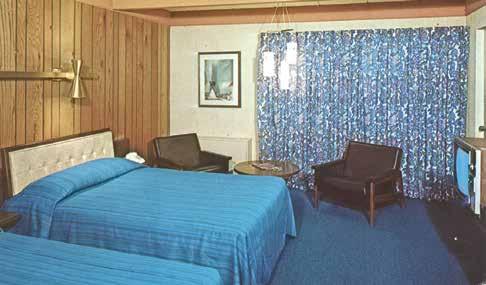
At its peak in the 1970s, Howard Johnson’s had become the largest hospitality company in America, with more than 1,000 restaurants and also 500 motor lodges. (Photo/Wikimedia Commons)
ing an American icon.
Host of the Highways Johnson persuaded an acquaintance in 1932 to open a second Howard Johnson’s restaurant in the Cape Cod town of Orleans and since it was franchised and not company-owned, it was one of America’s first franchising agreements. By 1979, the “Host of the Highways,” as it was known, had become the largest hospitality company in America, with more than 1,000 restaurants and 500 motor lodges. There were 605 restaurants, 265 company-owned and 340 franchised.
Also affectionately referred to as HoJo’s, there were 88 franchised Howard Johnson’s motor lodges in 32 states and the Bahamas. In 1964, Johnson introduced a reservation system that linked all the lodges wherein travelers could book a room as they went from lodge to lodge, or if one lodge was completely full, the reservation operator could help locate the next closest lodge available for occupancy. Once America’s largest restaurant chain, HoJo’s became a part of pop culture when the television series “Mad Men”
recreated the restaurant for an episode scene.
For many decades, Howard Deering Johnson overcame competition and survived setbacks. Alas, existing locations started to age, the menu grew stale, and franchisees were either unable or unwilling to remodel. A significant number of restaurants continued to drop as the relatives of original franchisers who inherited older HoJo’s either sold or redeveloped their sites. Johnson died in 1972, having retired in 1959 and leaving the company to his son Howard Brennan “Bud” Johnson. In September of 1985, crippled by several stumbles and changing times, Howard Johnson’s was sold to the Marriott Corporation and Prime Motor Inns. In another transaction, Marriott outright purchased Howard Johnson’s Company (sans Ground Round) from Imperial for $314 million dollars, losing the “HoJo’s” name. Howard Johnson’s hotels and motels are now part of Wyndham Hotels and Resorts. The last restaurant, located in Lake George, NY, closed in 2022.
SNL | from page 9 males.
Born in Newton but raised in Burlington, Amy Poehler became a breakout star during and following her eight-year (2001 to 2008) tenure but started out as a featured performer. “SNL” alum Tina Fey had been trying to recruit Poehler for years. The pair hilariously co-anchored the Weekend Update desk and Poehler turned in a ton of impressions as Hillary Clinton. The 2008-2009 premiere opened with Fey as Sarah Palin and Poehler as Clinton. A prolific writer, Poehler co-wrote the sketch with Seth Meyers with added jokes from Fey. “SNL” has seen its ups and downs over the years but Poehler, Fey and Maya Rudolph were among its biggest stars who helped shift the series into featuring more fe-
Milton native Jenny Slate also had a short run from 2009 to 2010. Slate is infamous for dropping an f-bomb live on air during her “Biker Chick Chat” sketch. She did impersonations of Lady Gaga, Hoda Kotb, Ashley Olsen, Olympia Snowe and Kristen Stewart. Michaela Watkins was born in Syracuse but grew up in Wellesley. She graduated from Wellesley High School and Boston University where she studied theater and acting. Watkins, another performer for one season (2008 to 2009) was behind memorable impressions of Hoda Kotb and Barbara Walters. Since leaving “SNL,” Watkins has had recurring roles in other television series like “The New Adventures of Old Christine” and appeared in films like “The Back-up Plan.”

A reverse mortgage gives qualified borrowers, 62 years old or older, the option to receive cash as a lump sum, a monthly check for life, and/or a line of credit that grows every month with NO required monthly principal & interest mortgage payments. All guaranteed by the federal government. You are, of course, responsible for your real estate taxes, insurance, and meeting other loan guidelines.
By not having a monthly mortgage payment, hundreds of thousands of eligible homeowners have utilized a reverse mortgage to:
• Receive tax free monthly cash for life
• Pay off a current mortgage or home equity line
• Payoff credit card debt
• Pay real estate taxes & property insurance
• Complete desired home repairs
• Finalize divorce situations or other legal matters
• Only one spouse needs to be 62 years old
• Gain peace of mind knowing that cash is available if ever needed
• And the list goes on!
NO monthly payment is required
You continue to own your home
Only one person needs to be at least 62 years old Easier to qualify for than a conventional loan You may receive cash when needed There is no cost to learn!
A reverse mortgage might not be the magic wand to solve every life challenge, but it very well could be the next best thing. Take the first step and get informed. I have helped hundreds of people and would enjoy the opportunity of having that conversation with you over the phone or in person.

Alain Valles Reverse Mortgage Specialist 781-724-6221
A great place to start is get your free “How to Use Your Home to Stay at Home” 36-page book. This is the official reverse mortgage consumer booklet approved by the U.S. Department of Housing & Urban Development and published by the National Council on Aging.
To receive your free copy, please call or text me at (781) 724-6221 or email me at av@powhse.com
I am also available to evaluate your specific situation, answer your questions, and calculate how much money is available to you.
Alain Valles was the first designated Certified Reverse Mortgage Professional in New England. He obtained a Master of Science from the M.I.T. Center for Real Estate, an MBA from the Wharton School, and graduated summa cum laude from UMass Amherst. He is the senior reverse mortgage loan officer MLO#7946 at Powerhouse Funding Corp. NMLS #1740551. He can arrange but does not make loans. Alain can be reached directly at (781) 724-6221 or by email at av@powhse.com
By MAtt roBinson contriButing Writer
BOSTON – Though it has been over 60 years since the Beatles first came to Boston, the band’s legacy has remained a strong force in the Hub and across the world.
And while many people may consider themselves avid fans, there have been two local men who go above and beyond when it comes to Beatlemania.
Cha-Chi Loprete has been a staple on the Boston radio scene for decades, serving as the promo guru at the legendary WBCN (which recently hosted a reunion at City Winery) and now as an on-air personality at WUMB. While the historic station may be known for folk and acoustic, when Loprete is on the mic, the amps get plugged in and the mop-top wigs go on, because it’s time for Breakfast with The Beatles (https://wumb.org/programs/breakfast-with-the-beatles/).
An accidental start
“Breakfast with The Beatles came to me quite by accident,” Loprete explained. “In 1985…the program director at WBCN…was creating a Sunday


night radio show called ‘Get Back To The Beatles’ and he wanted me to be the host.”
As he was already a huge Beatlemaniac and budding music historian, Loprete eagerly agreed and the rest is radio history.
These days, the show runs on Sunday mornings on WUMB and also on Seacoast Oldies 104.3FM in Maine, making sure that New England gets its weekly dose of the Fab Four every


week.
In addition to the radio show, Loprete co-hosts a podcast on the Boston Podcast Network (www.pod617.com ) with Suffolk University Professor David Gallant called “Get Back To The Beatles” and has been hosting a popular monthly series of live events at City Winery in Boston (https://citywinery. com/boston/) along with fellow Beatles expert (and allegedly the world’s only “Beatles magician”) John Logan.
Long-time
DJ Cha-Chi Loprete, right, and magician John Logan have teamed up to bring a multimedia experience to Beatles fans.
Teaming up to create a unique show
“The first time we officially met was at the Regent Theatre in Arlington after a Paul McCartney-themed event that Cha-Chi was hosting,” Logan recalled. “We then went out to dinner the following week to learn more about each other and quickly realized we could blend our talents together to create a unique show.”
And “unique” it is. From Beat-

the Winter Blues and Experience our Warm and Inviting Affordable Assisted Living Residence in Historic Downtown Gardner !
Heywood Wakefield Commons offers worry-free living at affordable rates in private apartments with services available such as:


• Daily social activities & programs
• Three chef-prepared meals daily
• Assistance with personal care needs
• Medication reminders
• Laundry & housekeeping services
• Safety checks
• Dedicated, caring staff 24/7




For more information or to schedule a tour, call Kristy Livingston at (978) 632-8292 or email info@hwcommons.com


632-8292





les-themed trivia (prizes for which include vintage albums from the audiophilic favorite Cheap Thrills Music & More) to Logan’s mind-bending Beatles-themed magic and original artwork (https://www.etsy.com/shop/ magicwiththebeatles/?etsrc=sdt), the shows feature special themes that go along with album and event anniversaries (such as the recent one that included stories from people who were at the first Beatles show in Boston).
“I was told that John produced a theater show using magic as a way for audiences to learn more about The Beatles,” Loprete explained when asked what he knew of his performance partner before they met. “[My wife] and I attended one of his shows and it was really astounding what he does!”
Combining Loprete’s passion for the band and Logan’s magical mystery tours, the dynamic duo’s “Come Together” experiences (http://cometogetherproductions.com) have become a regular favorite for Beatles fans from far and wide, many of whom bring the pair to their own offices and other special events.
“We took [our individual expertise] a step further and decided to create an immersive multimedia experience,” Logan agreed, “integrating rare footage, live music, and special guest interviews with people who knew The Beatles directly.”
In addition to the dynamic duo on the stage, the show is supported in great part by the fans but also by Loprete’s wife Stephanie and Logan’s long-time friend and fellow magician John Vale.
“Stephanie worked for many years in the music industry in radio, at Strawberries Records…and at Warner Bros./ Reprise Records,” Loprete noted. “She brings immense knowledge and experience to adapting our show to the stage. In fact, it was Stephanie who created the concept of our Come Together show at City Winery!”
“I’ve been in the magic industry for almost two decades,” Logan explained, “so I’ve seen a lot, but I can hands-down say that John’s approach to creativity is truly remarkable…. He’s a true talent and has helped take this show to the next level!”
Identifying himself as a “first-generation Beatles fan,” Loprete suggested that the authenticity and authority of someone who has seen and worked with members of the band indeed brings credibility to the shows.
“I share that information with John and his creative and magical mind finds a way to create a magic trick that reinforces the story,” Loprete added.
Inspired by Ed Sullivan show appearance
When asked what got each of them started on their respective Ab-
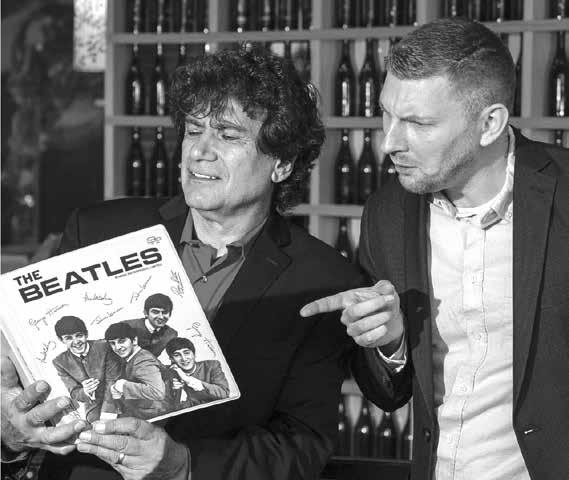
bey Roads, Loprete and Logan bring up early musical memories that have clearly stood the test of time.
“It was the weeks and days before and including The Beatles’ first appearance on the Ed Sullivan Show,” said Loprete. “There was pure excitement and electricity in the air. It was truly unforgettable!”
In addition to inspiring his love
A mutual love for and extensive knowledge of The Beatles brought DJ Cha-Chi Loprete and magician John Logan together to entertain fans of the Fab Four.
(Photo/Leo Gozbekian)
of the Beatles, the Sullivan show also inspired Loprete to go into broadcasting and set him upon a quest to meet a Beatle.
“I fulfilled my lifelong dream of being a part of WBCN and I interviewed three of the four Beatles multiple times over,” he beamed. “Each meeting was a most exciting and fulfilling experience. They were every-
You can’t take it with you
By MAriAnne Delorey, Ph.D.
Americans tend to have more stuff than they need. At no time is this more apparent than when they are downsizing. There are plenty of professional organizers that can help you get a handle on your stuff, but the first step in downsizing should actually be to get a better handle on your space.
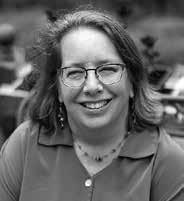
Go to your new space and measure to see what will fit, but don’t limit your thoughts to your new room, apartment or condo. Talk to the manager and other residents where you are moving. Find out what amenities your building will offer that will help you limit what you will need to bring.
Does the building have an exercise room or an exercise program? Are there safe and attractive paths for walking? If so, you might not need your treadmill and exercise videos.
Are meals available? Don’t bring more pots and pans than you will need for the occasional meal. If there is a community kitchen, is it well stocked? Maybe you can do without your 12 cup coffee maker and 60 piece dinnerware set.
Can you host family parties in the common areas? Then bring a loveseat instead of a couch and a four person dining table instead of an eight person table.
What are your responsibilities with regard to cleaning? If you are in an apartment, you will likely need a vacuum, a broom, a mop and some basic cleaning equipment. If cleaning services are provided, you might need even less. If you are going into a condo, you may still want to hang on to your rug shampooer.
How much storage is available? And what are the con-
thing you would want them and expect them to be!”
As for Logan, Beatlemania bit not through the TV but a CD.
“I was eight years old when I received The Beatles’ ‘1’ CD with all their greatest hits,” the slightly younger Logan said. “That CD sparked my passion in them and I soon learned more about their personalities, creative process, and what they were able to do at such a young age.”
Just as Loprete has had a longheld dream of interviewing the Beatles on radio, Logan has wanted to combine magic and music for some time as well. Working together, both have been able to surpass even their wildest fantasies they said.
“Seeing it come to life and being part of a fantastic team has been a dream come true,” Logan said. “From watching thousands of people sing along to Paul McCartney when he plays ‘Hey Jude’ at Fenway Park, all the way to emceeing with Cha-Chi at the Boch Center for The Beatles tribute band ‘Rain’, it really shows the positive impact The Beatles had on the world as we’re still celebrating them 60 years later.”
ditions of that storage? Is it a private, locked space or a communal, shared space? Is it seasonal only? On a similar note, ask about the closets. If you saw a model unit, ask about the specific dimension and number of closets.
Ask about rules of use for common areas. Can your grandchildren use the toys in the common area? If you leave a radio in the common areas, will it be safe? Will it be okay with management?
Find out about local transportation. Will you be bringing your car? Do you know what the closest bus route is? Will you need to bring sturdy bags so you can go grocery shopping and haul your food home on a bus? What about a cart?
Determine the rules for the maintenance crew. Will they let you borrow a hammer if you are hanging a picture? Will they help you hang your curtains? What other tools will you need to bring?
Check out the laundry facilities. Are their machines small? If so, you might want to forget about that double plush comforter and bring a blanket and a bedspread.
Are there TVs and a computer in common areas? Is there a lending library? Maybe you won’t need such a big desk or work space. Can you tolerate sharing some of these items or do you need your own?
What about outside space? Is there a pool or tennis court? You may want to make sure your pool floats and rackets don’t get buried in the move. If you will have outside space, will you want to garden? Prepare by setting aside your favorite tools and equipment.
Every building is different in terms of what amenities it offers residents. The rules set up by management for common area use will vary from place to place.
Marianne Lyons Delorey, Ph.D. is the executive director of Colony Retirement Homes. She can be reached at 508-7550444 or mdelorey@colonyretirement.com and www.colonyretirementhomes.com.
By JAnice linDsAy contriButing Writer
At a recent family party, we played a game where a game card asked a provocative question and each player gave a personal answer.
One thought-provoking question went something like: “How would your daily life be different if you were a billionaire?”
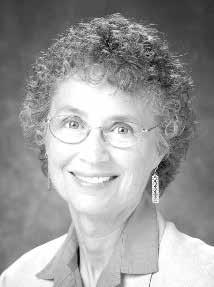
This inspired flights of fancy: mansions, private planes, big-business ownership, tropical islands. Billionaires seem very much in the news. We imagine that they do fabulous things all day.
But who cares? I like my little anonymous non-billionaire life. Mostly.
If I were a billionaire?
I would spend more time doing the things I enjoy and less time doing the things I don’t. I could do this because I would hire somebody else to take care of the irksome details that now impinge on my time and attention.
Example: When some miscreant bashed my mailbox to an unusable state, I had to spend time and effort locating another mailbox and a person to install it.
Late on the evening of a winter holiday, when
my well water’s radon-remediation system, which cycles on and off, refused to cycle off, I had to figure out how to make the water bypass the system, then how to shut the system off.
I don’t even want to think about trying to outwit the mouse tribe that decided to spend a cozy winter on my bulkhead steps and in my garage.
And housework. I like my house to be clean and orderly, but I dislike being the person who makes it so. If I were a billionaire, I would hire the person who would hire other persons to dust, vacuum, and polish.
And this person would pay bills; and balance the checkbook; and prepare tax documents for the accountant; and be at the house when the plumber says he’ll arrive between 1:00 and 4:00; and notice when woodwork needs painting and find people to do it; and know whom to call to re-caulk the bathtub; and keep track of when to refill prescriptions; and take my car for service and inspections; and many other et ceteras.
I have discovered that the person I want is a butler.
I recently read an article about butlers who work for billionaires. (The article in The Week magazine was excerpted from one by Will Coldwell in 1843 magazine.)
If you’re thinking of Mr. Carson in Downton Ab -
bey, think bigger.
One butler related that a woman he worked for liked a pair of shoes that she saw in a photograph. She wanted a pair. There was no label, but the butler managed to trace the shoes’ origin to a Hawaiian boutique. He arranged to buy the shoes and fly them to Dubai on an airplane seat, first-class.
I don’t want Hawaiian shoes. Or a place in Dubai. But I want that butler!
Just think what I could do with my time if I had a butler! Read more books. Produce more fine art (truth: barely acceptable art). Convene more meetings of Crones Alone, the support group a friend and I started for older women who live alone. Take more classes. Volunteer in other places besides the library’s secondhand book shop. Spend more time tending to the needs of our ukulele group of which I’m the leader (truth: leader only because nobody else wants the job). Do more with, and for, friends and family. Watch the birds. I might even write something of some significance.
Alas, it will be many years (truth: centuries) before I become a billionaire.
For now, I have to stop writing and take out the trash.
Contact jlindsay@tidewater.net




By sAnDi BArrett contriButing Writer
WELLESLEY – Max Hobart’s musical journey has taken him places he never could have imagined. Currently the music director and conductor for the Metrowest Symphony Orchestra, he spent 27 years with the Boston Symphony Orchestra (BSO) as a performer and conductor. His resume includes music director of the Boston Civic Symphony, assistant concertmaster with the BSO, featured soloist with the Boston Pops, violinist with the Cleveland Orchestra, the National Symphony Orchestra, the New Orleans Symphony, and most recently the Wellesley Symphony Orchestra.
He is a fascinating man with a joyous sense of humor and an extensive list of musical credentials. Hobart’s notable performance venues include Symphony Hall, Tanglewood, Carnegie Hall, and an array of global concert tours. He has performed with brilliant conductors like Arthur Fiedler, John Williams, Seiji Ozawa, William Steinberg, and Erich Leinsdorf.
Modest origins
Growing up in an average family who worked hard and believed in the American Dream, the 88-year-old Wellesley resident’s early years were filled with school, friends, and family life. Hobart was born in Nebraska and grew up in California. He credits his mother for instilling his strong work ethic and teaching him that working hard and loving what you do is the foundation for success.
“I grew up in a blue collar community,” he recalled. “When the musical instrument salesman came to our neighborhood, I was hoping to get a guitar like my best friend. Our heroes were Roy Rogers and Gene Autry, so playing a guitar was perfect. When he got to my house all he had left for me was a violin. With my mother’s persuasion, I practiced every day.” This dedication to his craft and an inherent
talent swept him to the top of the symphonic mountain.
As he progressed along his musical journey, honing his skills in community orchestra performances, he was inspired by playing next to professional musicians. One early career highlight included a bit part playing a violist in the 1956 musical drama movie “The Benny Goodman Story.”
An amazing ride
Hobart’s career has taken him on an amazing ride. He recalled one of his favorite experiences as a conductor was jumping into a pre-planned program with no time to practice. “Three hours before a Tanglewood concert I got a call to fill in for John Williams who was ill. The orchestra was sympathetic to my stepping in at the last minute and they played wonderfully for me in front of a crowd of 10,000 people.” It was a testament not only to Hobart’s talent, but also to how much his peers loved and admired him.
Humorous instances dotted the onstage landscape of Hobart’s time as first chair violinist. “I was at Carnegie Hall with the BSO. Seiji Ozawa was conducting Brahms Symphony Number Two and I broke my E string,” Hobart recalled. “I was so nervous with 3,000 people watching me restring my violin. I started tuning it up and the string broke again! At this point Ozawa was laughing at my plight. I finally traded with the second violin so they could fix the string.” The show must go on.
Are you considering bringing out your dusty musical instrument from the closet? “The best advice I have for a senior wanting to play music is to pick up an inexpensive instrument and practice,” said Hobart. “Many of our musicians played in high school and are now retired and playing in the MSO.”
When you love your craft/job/
hobby with so much passion, it is easy to see why musicians gather together to serenade us with joyful harmonious notes. We are fortunate to have a music director of Max Hobart’s caliber conducting his way into the hearts of Central Massachusetts.
The Metrowest Symphony Orchestra’s schedule is available at https:// metrowestsymphony.org/. Its concerts are held at the Dwight Performing Arts Center at Framingham State University.
The orchestra is comprised of a talented group of professional and amateur musicians who are dedicated to providing an exceptional symphonic experience. Musicians are encouraged to reach out to the MSO if they are interested in auditioning. There is an ongoing need for string players.
“Listening to music is like reading a good book,” said Hobart. “The more you read it, the more nuances you discover.”

By shAron oliver contriButing Writer
WORCESTER – One of the most critically acclaimed horror films in cinematic history is undoubtedly 1973’s “The Exorcist.” In fact, it is a benchmark for the genre of supernatural movies. The surprise box office smash received 10 Academy Award nominations and brought attention to something much of the general public may not have been aware of — exorcism. Before Linda Blair made her head turning debut as the demon-possessed Regan MacNeil in “The Exorcist” and stirring up a panic, there was an actual incident for which the film was loosely based on.
In 1949, a 13-year-old-boy in Cottage City, Maryland who was referred to as “Roland Doe” or “Robbie Mannheim” was said to be a victim of demonic possession. His episodes were recorded by the attending priest, Raymond J. Bishop, who exorcised the boy. Meanwhile, Massachusetts was no stranger to stories of exorcism, having

a high concentration of Catholics living in the area. The College of the Holy Cross has a so-called exorcism room
and the most frequently asked question by those touring the campus is, “Are you going to show us the exorcism room?” But will there be echoes of “The Exorcist” for these thrill seekers?
Stories abound regarding Holy Cross room
Currently, the room at the top of O’Kane Hall is used as storage space. Magician Harry Houdini visited the college in 1925 while on a nationwide tour lecturing on the “fraud of spiritualism.” Still, stories abound.
One tale involves how two Jesuit priests locked a young demon-possessed woman in a room in O’Kane Hall for two days for the purpose of performing an exorcism. As to what happened by the third day, the story varies. One version is that both priests were found dead. Another version has one priest dead after being thrown from


Legend has it that an exorcism was once performed by two priests in a room in O’Kane Hall, pictured here, at the College of the Holy Cross in Worcester.
(Photos/Wikipedia)
a window with the other priest being missing. Both accounts have the young woman gone and never seen again. Tom Cadigan, Holy Cross Director of Alumni Regional and Special Programs, told Worcester Magazine, “We were the only Catholic college in New England at one time, so people from all across the region would travel to Holy Cross to get sacraments performed. So, keeping an open mind, it wouldn’t be that far-fetched for a family who may have thought a loved one to be possessed to come to Holy Cross for spiritual help.”
Boundary between natural and supernatural
Mathew Schmalz, a professor of religious studies, said in Holy Cross Magazine, “One thing about Catholicism that sometimes gets lost in the modern era is that the boundary between the


natural and the supernatural, at least in traditional Catholicism, is not that stark.”
In 2022, the Office of Advancement extended an offer to the class of 2020, who did not have a traditional commencement due to COVID, to tour of the exorcism room and sign their names on its walls. During a Holy Cross trivia game played at the Holy Cross Alumni Association’s board of directors fall 2022 meeting, the final question: “What was the function of the room on the fifth floor of O’Kane?” Board members cheered enthusiastically, “Exorcism!”
The exorcism room at Holy Cross has a wall plastered with names of those who dared to enter. Aside
The 1973 horror film “The Exorcist” drew public attention to the phenomenon of demonic possession and exorcism. (Photos/ Wikipedia)
Fred Gwynne | from page 6 a wonderful voice. He also loved clever puns. A gifted illustrator who loved wordplay, Gwynne illustrated and wrote several children’s books such as “Chocolate Moose for Dinner,” “The King Who Rained” and “Daddy Has a Mole on His Nose.”
from the exorcism room, there are rumors of haunts on campus like a tunnel which may have been part of the Underground Railroad. According to the school, there are no records of any exorcism or strange occurrences ever taking place but that has not put a damper on any curiosity about the urban legend.
On the other hand, a few people connected with the movie “The Exorcist” met face to face with tragedy, leading many to believe the film was cursed. A number of people died during the making of the film and an extra was later convicted of murder and suspected in a string of unsolved murders in New York City in the 1970s.
Fred Gwynne, with his sixfoot-five-inch imposing figure, was widely known as the purple-faced, lovable funeral parlor worker and family man on “The Munsters,” but his career in acting did not start there. He was discovered by Broadway actress Helen Hayes while performing in a Shakespeare play. She helped him launch his Broadway debut in 1952, playing a gangster in “Mrs. McThing.”

Prior to “The Munsters,” actor Fred Gwynne starred as Officer Francis Muldoon on the TV series “Car 54, Where Are You?” (Photo/Wikimedia Commons)
TV and movie career
He went on to star in 1960s television sitcoms “Car 54, Where Are You?” as Francis Muldoon, “The Munsters” as Herman Munster, as well as films like 1984’s “The Cotton Club,” 1989’s “Pet Sematary,” and 1992’s “My Cousin Vinny.”
Following a career in acting, Fred Gwynne retired to a quiet life in Taneytown, Maryland. The father of five died of complications from pancreatic cancer in his home in 1993 at 66.












By shAron oliver contriButing Writer
GLOUCESTER – It is probably safe to say few people would have Italian dictator Benito Mussolini as the reason behind Gorton Seafood’s change in their business model on their bingo card. Yet, Mussolini’s decision to stiff the Gloucester seafood company out of $1 million for a shipment of salt cod in 1923 turned out to be a blessing in disguise.
By the time the Italian fascist had seized power in 1922, Gloucester was thriving as a major fishing port where fisherman caught, cured and sold cod. Gorton’s was the largest fishing company on the East Coast and looked forward to receiving the $1 million from the Italian government. However, in 1923, there was a decline in the demand for salt cod which had served as a staple for centuries. People started to prefer fresh fish. When the shipment arrived in Italy, Mussolini ordered it seized and refused to pay the company. Gorton’s found themselves facing bankruptcy.
Birdseye to the rescue Being on the brink of financial ruin was heartbreaking for Slade Gorton, who had moved to Cape Ann from Rhode Island, helping his wife operate a boardinghouse by catching and curing fish for the boarders. What started out as an assist to his wife turned into the area’s largest and prosperous fishing business with 55 vessels and thou-

sands of employees in 1906. Help would come in 1924 by way of another pioneer in the food industry — Clarence Birdseye. That year, the eccentric inventor moved to Gloucester where he tinkered around with ways to freeze and package meat, vegetables, fruit and seafood. He had spent the previous five years trapping furs in Labrador, observing how the Eskimos preserved fish by placing them in barrels of brine where sub-zero temperatures quickly froze them. Birdseye mimicked the Eskimos’ method by using a bucket of brine, a cake of ice and an electric fan.
Looking for a rebound, Gorton
ASSISTED LIVING FACILITIES
Bigelow Village – Rutland
Congregational Retirement –Melrose
Clarence Birdseye’s groundbreaking inventions for freezing food revolutionized the grocery business and helped save Gorton’s Seafood from bankruptcy.
(Photo/Courtesy of Conagra Brands)
sought Birdseye’s help in developing a way to freeze fish and theirs would be a match in frozen foods heaven. Five years later, the pair created a product that is served in millions of U.S. households to this day — frozen fish sticks in a family-size box with the Gorton logo on it and a fisherman in a yellow slicker and the slogan: Trust the Gorton’s fisherman.
A 1950s advertisement promoted the company’s virtues: “Easy to prepare, thrifty to serve, and delicious to eat, fish sticks, it can be truthfully said, have greatly increased the demand for fish, while revolutionizing the fishing industry.”
Brookhaven Assisted Care – West Brookfield
Heywood Wakefield Commons – Gardner
SUBSIDIZED HOUSING
Colony Retirement – Worcester
Green Hill Towers – Worcester
Sherwood Village – Natick
Revolution in food marketing
In 1926, while yachting off Gloucester and feasting on a flavorful goose that had been frozen for six months, Marjorie Merriweather Post inquired about her delicious dish and discovered that Clarence Birdseye had frozen it. She then told her father, who bought Clarence Birdseye’s business in 1929 for $22 million. The company, General Foods, retained Birdseye to do research and develop freezing techniques and placed the inventor’s name on its frozen products. Birdseye went on to invent a commercial freezer, and freezer cases for grocery stores.
In 1930, General Foods market-tested 27 frozen foods in 18 Springfield grocery stores and consumers could not get enough of them. Birdseye continued to innovate, experiment, and develop new inventions. He invented quick drying in 1946, improved the incandescent light bulb and founded an electric company that became part of Sylvania. Before his death in 1956, Clarence Birdseye had received 250 patents.
Benito Mussolini’s backstabbing refusal to pay for a shipment of cod that he ordered could have led to a major business failure for Slade Gorton. Instead, it forged a collaboration between Gorton and Clarence Birdseye which resulted in thousands of jobs and a frozen food empire for both men that continues to thrive a century later.


than its portrayal
on the 1970s TV show. (Photo/Wikimedia Commons)
By shAron oliver contriButing Writer
MEDWAY – Many can recall the 1970s classic television series “The Life and Times of Grizzly Adams.” Fans tuned in each week to see the innocent fugitive and bear whisperer, played by Dan Haggerty, help strangers navigate through the wilderness. Of course, some of those strangers had ulterior motives. Nevertheless, the story of the real Grizzly Adams did not begin as a man falsely accused of murder, on the run with no one but a trader named Mad Jack (Denver Pyle), Nakoma (Don Shanks), and a bear named Ben for friends.


Medway shoemaker
California’s legendary mountain man John Boyden Adams (or John Capen Adams) was born in Medway to Eleazar and Sybil Adams in 1812. In actuality, his first job was that of a shoemaker in Massachusetts and he only lived in the California mountains for less than five years. According to his biography, Adams did show an interest in and talent for managing a troupe of animals brought to the U.S. from Africa. Such boldness can come with a price. He found himself bedridden for months after a near-deadly encounter with a Royal Bengal tiger. After spending a year in recovery, Ad-





info@trustedlikefamilyhomecare.com







Grizzly Adams | from page 19
ams resumed his cobbling business. Adams married a woman named Cylena Drury and the couple had two daughters. Tragedy struck in 1849 when Adams and his father Eleazar lost their combined savings in a fire that destroyed their business. Unable to cope with the financial hardship, Eleazar Adams hung himself that same year. Despondent, Grizzly headed west to join other California Gold Rush chasers with a promise to send money back to his family whenever he could.
Into the mountains
While in California, Adams mined for gold and worked on farms and ranches. He also invested in real estate ventures and was soon able to earn enough money to start his own sluice business, employing several men. After getting conned by business partners, the 40-year-old Adams packed his belongings into an ox cart and hiked the 200-mile trail into the Sierra Nevada where his bearded frontier man persona took shape. He ate nuts and berries and wore various animal furs.

Interestingly, California’s state flag, painted by Charles Nahl in 1855, features a grizzly bear named Samson. The bear was once captured and owned by John “Grizzly” Adams.
different. Historian Jon T. Coleman wrote: “Lions escaped and ate Shetland ponies. Grandstands and tents collapsed, pinning women and children in the crush; caravans dropped through bridges, wrecking wagons and drowning specimens.”
Furthermore, it was alleged that Adams regularly beat the bears to keep them in submission and that he obtained his famous bear, Ben Franklin, by killing its mother, and then forcing a greyhound to suckle the cub. Undoubtedly, it is much easier to sell the story of a man who lived harmoniously amongst wild beasts than to tell the tale of an animal abuser.
Adams reportedly formed a close relationship with Native American tribes in the area, unlike other downon-their-luck gold miners turned mountain men who found the five-dollar offer for a Native American’s scalp much more lucrative.
•
•
•
•
•
•
•
Grizzly Adams chose to track and
•
•
•

tame wild animals, sometimes with the aid of indigenous men. He advertised himself as an expert trapper and tamer and showcased his catch as a traveling menagerie. Unlike the television series, the real story of how he trapped and trained his animals is far
Grizzly Adams eventually sold what was left of his menagerie to P. T. Barnum and moved back to Boston to be with his wife and one of their daughters. He died in 1860 at the age of 48 from complications of a serious head injury sustained during a wrestling match with one of his bears in 1858. P. T. Barnum paid for his funeral and burial in Charlton. Interestingly, California’s state flag, painted by Charles Nahl in 1855, features a grizzly bear named Samson. The bear was once captured and owned by John “Grizzly” Adams.


